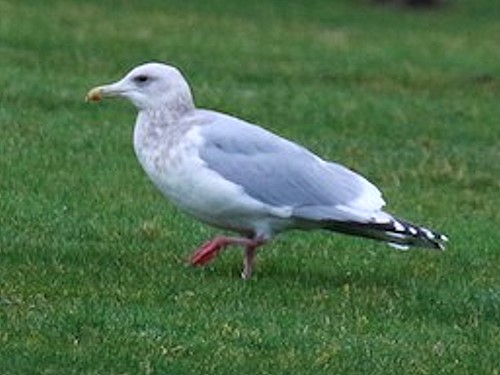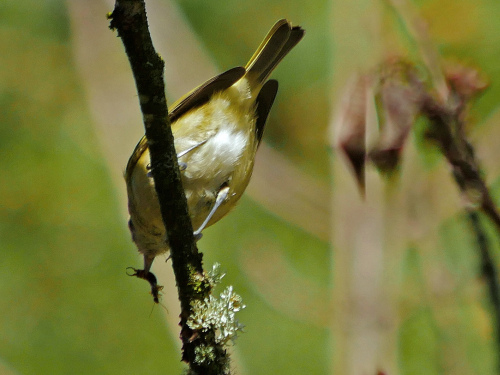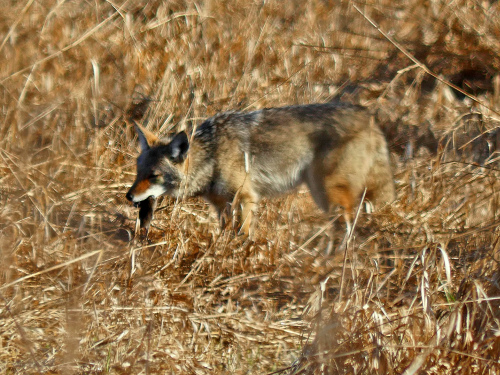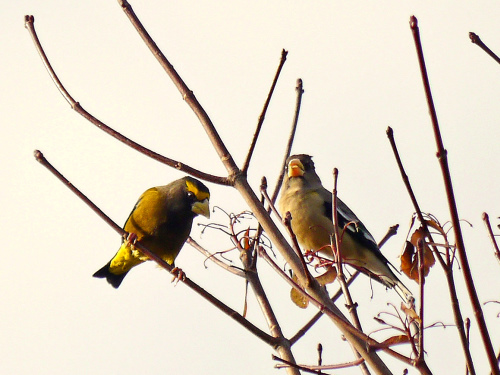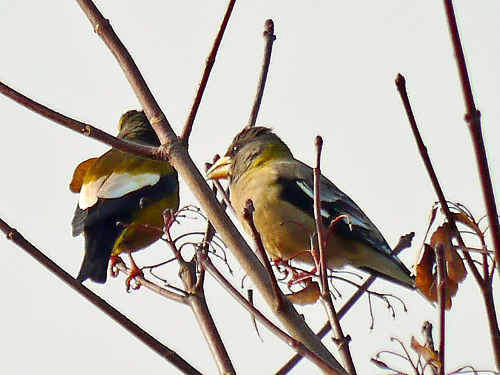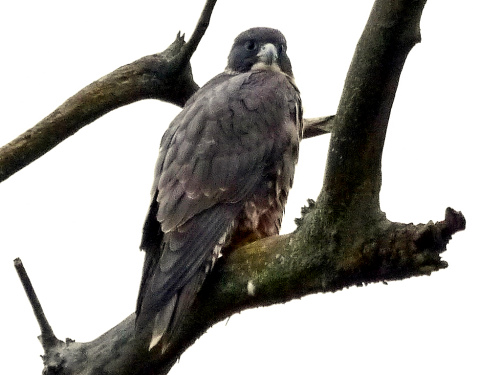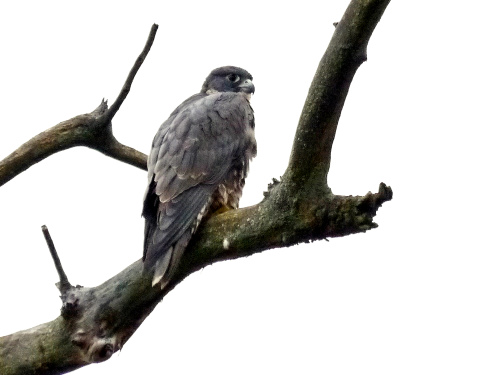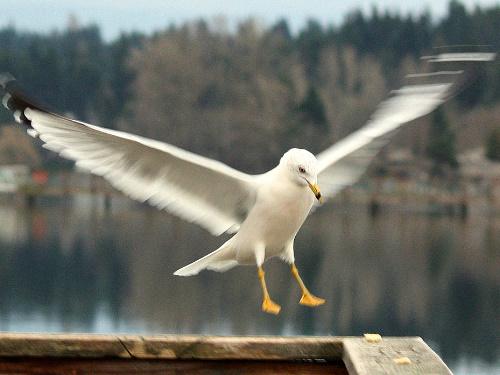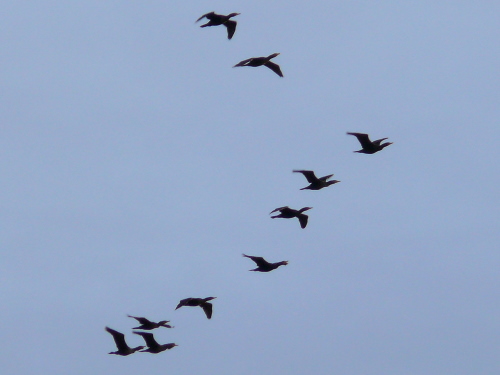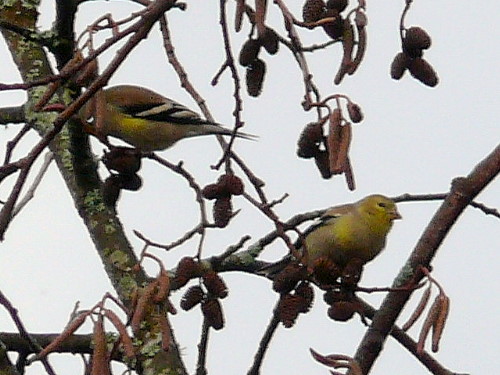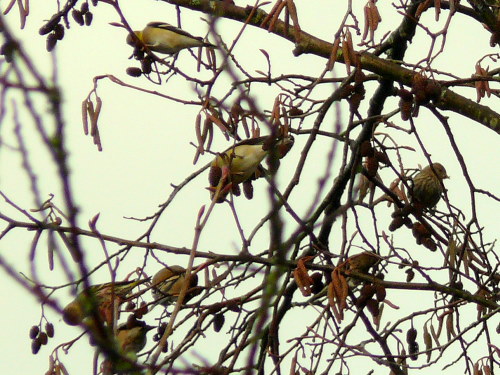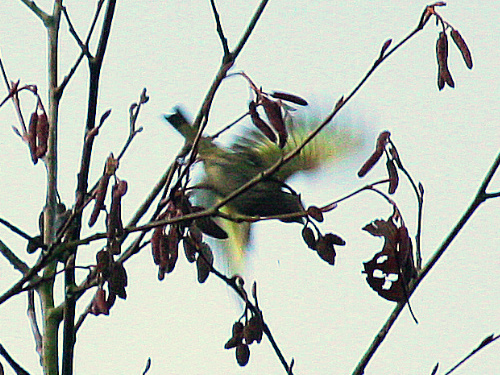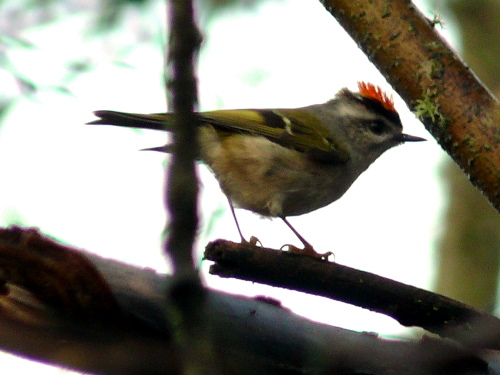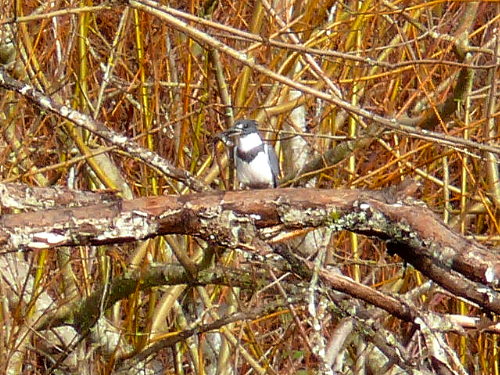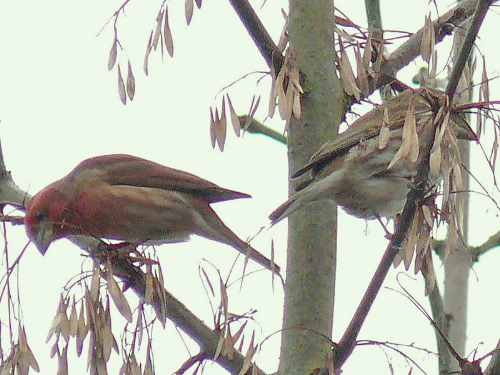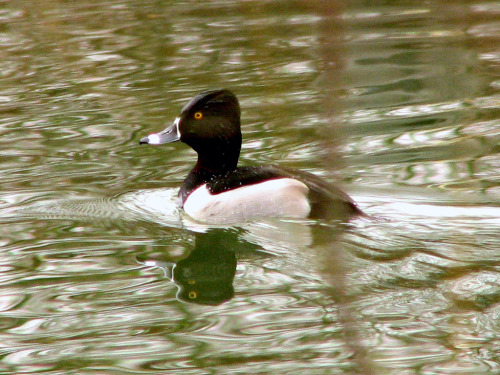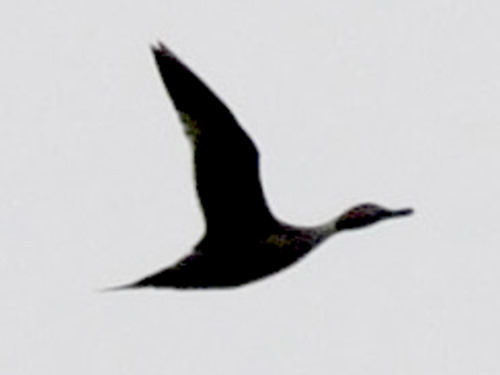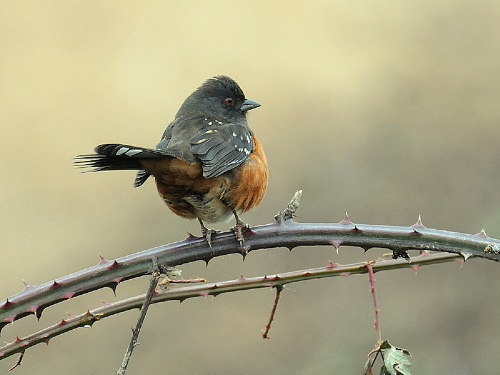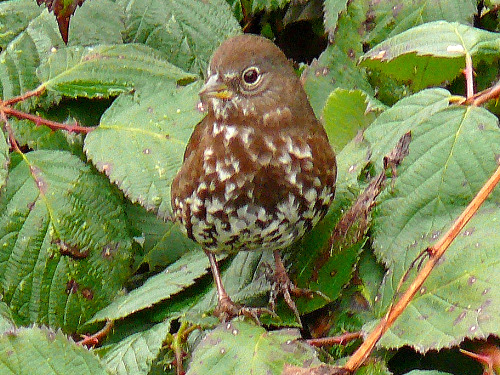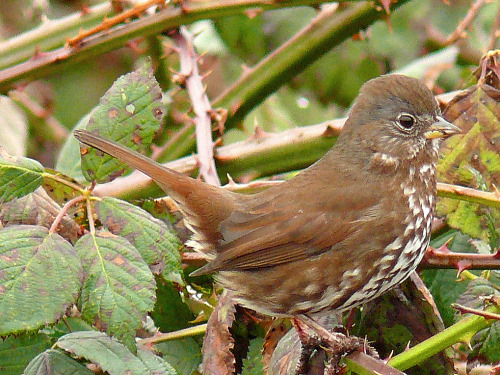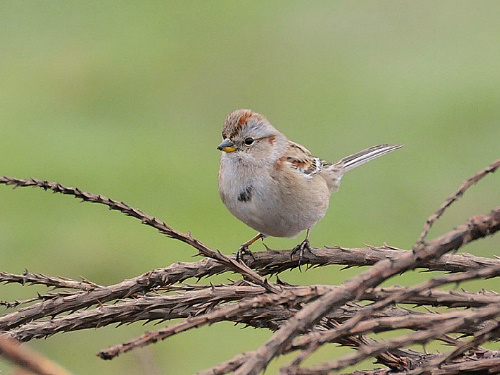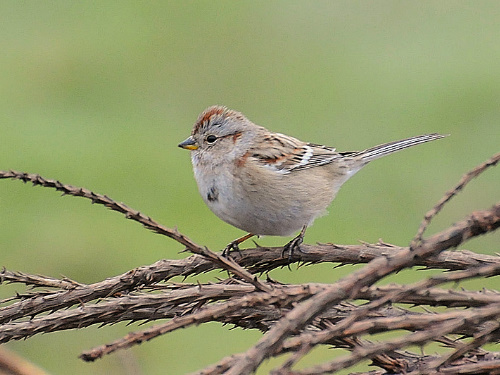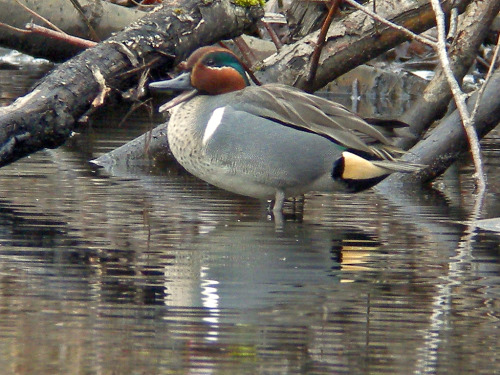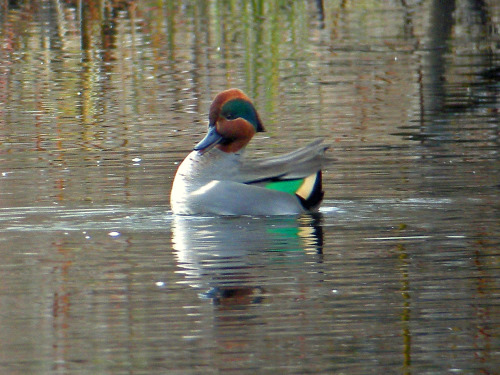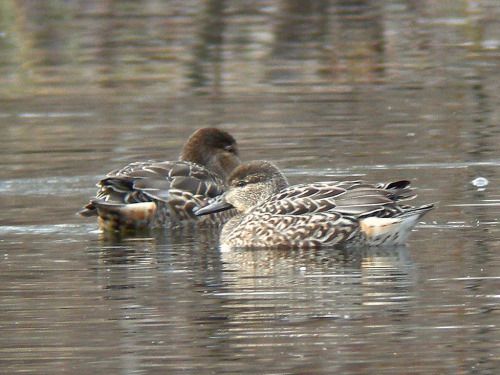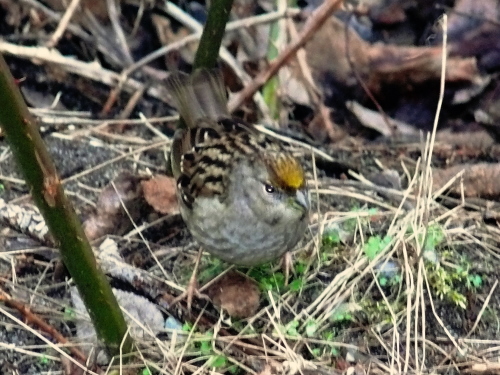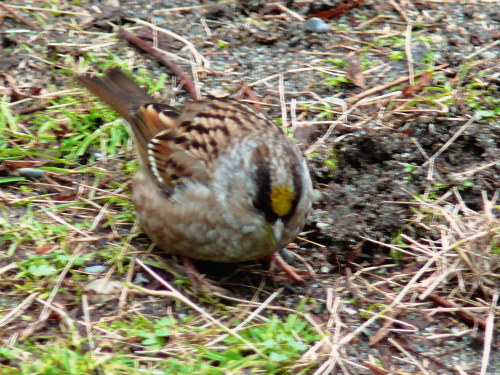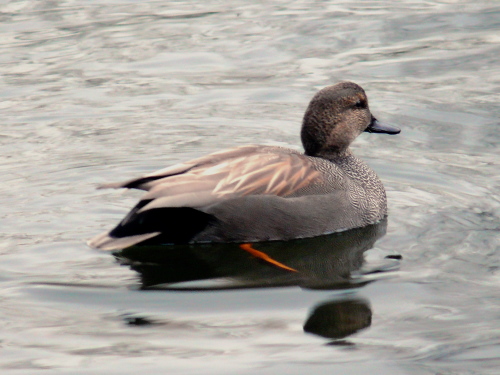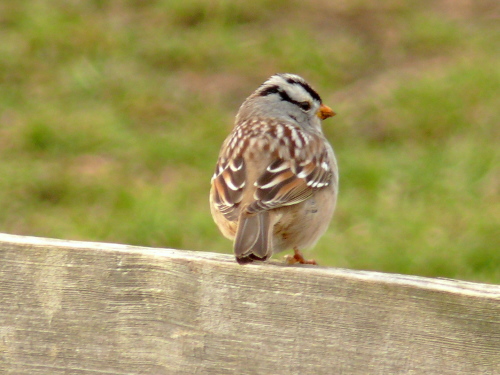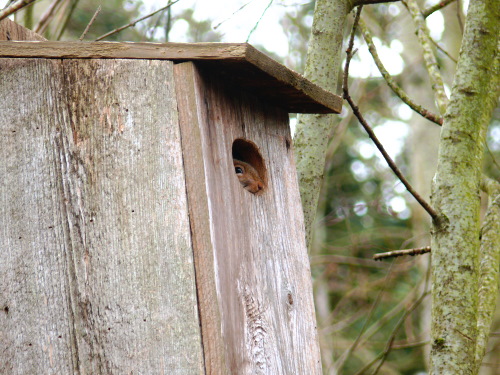| We finally got a Thursday without totally crappy weather! It was warm, and while overcast, it pretty much didn’t precipitate, nor was there more than a few puffs of breeze. Also, yesterday was the Cross Quarter; we are now more than half way between the Winter Solstice and the Spring Equinox, and by my reckoning, that makes it Spring now. The birds seemed to agree, with lots of singing, etc.
Highlights:
SNOW GOOSE 1 seen flying north out of the park – FOY
American Wigeon 2 in slough below weir – First of Year
Green-winged Teal 18 – rather a lot really – on the Rowing Club pond Greater Scaup 2 in slough
Horned Grebe 1-2 well out on lake
Western Grebe 1 really far out on lake
Green Heron Juvenile again at south RC pond
Northern Saw-Whet Owl Matt heard two east of boardwalk before 6am
MERLIN 1 near concert venue
Northern Shrike Dependable juvenile at usual spot
Yellow-rumped Warbler 2-4 near weir
White-crowned Sparrow Amazingly, First of Year. Only 1 juvenile
The SNOW GOOSE was first heard (but not seen) in flight, and it sounded like a weird goose, We weren’t sure if it was Canada or Cackling, but it was behind a large grove of firs, and we thought nothing more of it. About 5 minutes later, while scanning SR-520 looking for Rock Pigeons (none then, but I saw 3 on my way back from the Snohomish Black-headed Gull), I noticed a white bird with black wingtips WAY off to the north. It was flying away, but it luckily circled back a bit, allowing us to see that it was, indeed, a Snow Goose. Grace & Ollie were separately in their car, a lot closer, and called to report it after the fact. This was only our 5th February sighting ever for Snow Goose.
The MERLIN was perched in a tall Doug Fir that we can see from where we park our cars. As I was getting in to my car, I saw a bird atop the tree. “Robin”, I said to myself, but then I chided myself that I should actually look with my binoculars. I ignored that chiding and got into the car and looked at the bird again. “Robin”, I again said to myself, and started my car. Finally, I listened to that other voice in my head and looked at the damned bird. And, of course, it was no Robin. It was a Merlin.
Got to look at every bird. Got to look. Got to. How many times do I have to say that? Actually, it was the same with the Snow Goose, which at first glance I’d categorized as black wing-tipped gull, and I almost didn’t stay on the bird long enough to tell it was no gull.
Singing birds included ANNA’S HUMMINGBIRD, BLACK-CAPPED CHICKADEE, BEWICK’S WREN, AMERICAN ROBIN, FOX SPARROW, SONG SPARROW, DARK-EYED JUNCO, and RED-WINGED BLACKBIRD. Some of the GREAT BLUE HERONS were visiting the heronry, with one actually standing on a nest.
At the Rowing Club, Grace & Ollie saw the juvenile Green Heron eat what appeared to be a BULLFROG tadpole. We also heard PACIFIC TREE FROGS, and there was one RED-EARED SLIDER.
Spring!
For the day, 56 species (10 more than either of the last 2 weeks). With SNOW GOOSE, AMERICAN WIGEON, and WHITE-CROWNED SPARROW new for they year, we’re up to 70 species for the year.
== Michael Hobbs
|

Hooded Mergansers at Rowing Club. Photo by Bob Asanoma

Male Hooded Merganser at Rowing Club. Photo by Bob Asanoma

Hooded Mergansers at Rowing Club. Photo by Bob Asanoma
|










